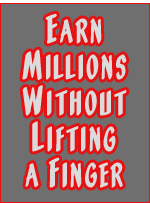
|
The parallels between creating a successful ad and an effective website are striking. What amazes me is how long it's taken for people - even companies with huge advertising budgets - to realise this. |
 |
First you have to be noticed |
 |
Tell them how they benefit |
 |
Make them an offer they can't refuse |
|
By now you're probably curious about how impactive, relevant and compelling my ads were. Clicking on the graphics below will take you to a sample of my print, radio and TV work. Since I have amassed a sizeable portfolio over the years, I've been adding new ads on a regular basis. To check out previous inclusions, click Archives. |
 |
 RADIO |
 TELEVISION |